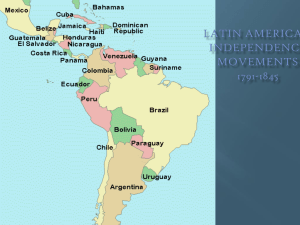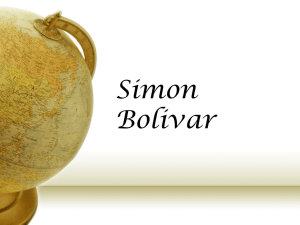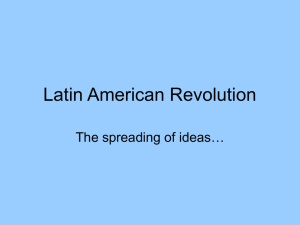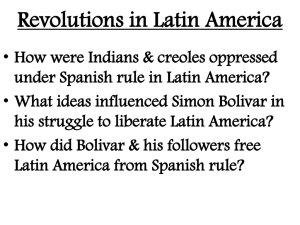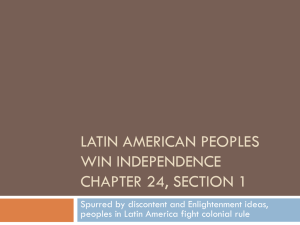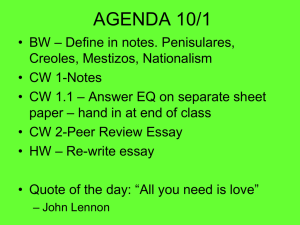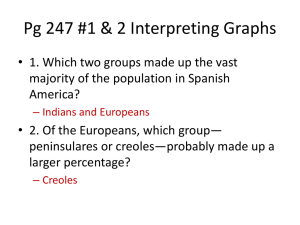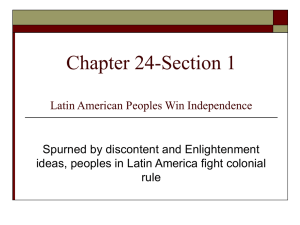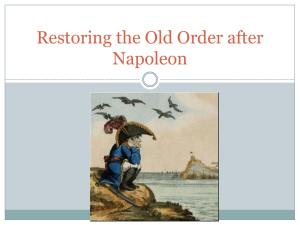Revolutions in Latin America
advertisement
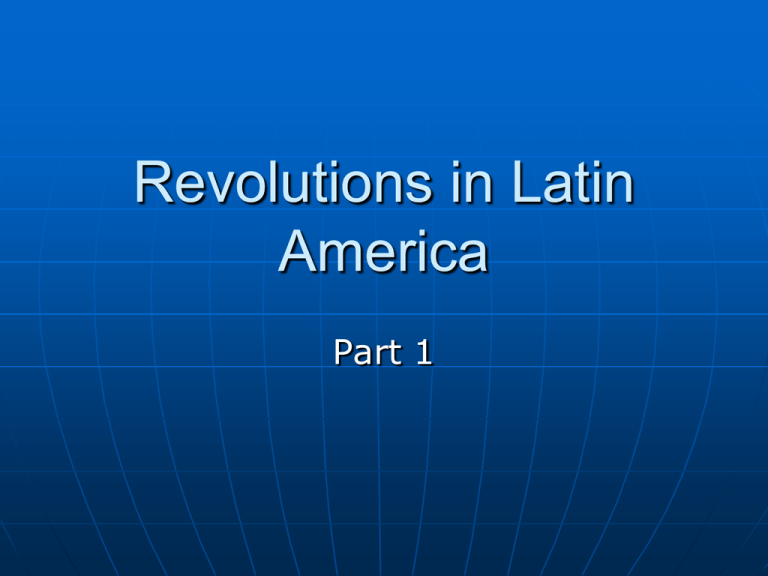
Revolutions in Latin America Part 1 What is Latin America? Latin America is Central and South America (and the Caribbean) It is the countries that were originally colonized by Spain, Portugal, and France—the Latin Language countries. Spain colonized most of Latin America. Map of South America Go Over Handout Social Structure of Latin America Social status determined by parentage (A racial hierarchy). Peninsulares—People that were born in Spain. They dominated political and social life. Creoles—Persons whose ancestors were from Europe but who were born in Latin America. Usually upper middle class (owned large ranches—haciendas, mines or were merchants). They resented their second-class status. Mestizos– People of European and native American descent. They too, resented their third class status. Mulattoes– People of African and European descent. They were angry about being denied the status, wealth, and power that was available to the whites. Native Americans— People whose ancestors were born in the Americas. Slaves—People from Africa. Economic Policies Mercantilism—The colonies could only trade with the mother country. (What would be the 2 things that would cause tension in Latin America towards the mother country [Spain])? Reasons Colonists are upset with Spain 1. They resent the fact that the Peninsulares dominate colonial society and politics. 2. They resent mercantilism. 3. The Creoles learn of the ideas of the Enlightenment and see the revolutions in America and France. When the Colonists Revolt When Napoleon conquered Spain in 1808, he put his brother Joseph on the Spanish throne. The colonists (especially the creoles) saw this as a good time to try for independence. Simon Bolivar Born to a wealthy Creole family in what is today Venezuela, Bolivar was educated in Europe and taught the ideas of the Enlightenment. Like many Creoles, he resents the privileged position of the Peninsulares and the mercantilist policies of Spain. Also, Bolivar was encouraged by the revolutions in the United States and France. Called “the Liberator” or “The George Washington of Latin America.” What is Latin America? What country had colonized most of Latin America? What determined a person’s social status in Latin America? What group was at the top of Latin America’s social structure? Why did people like Bolivar want to be independent of Spain (want a revolution)? The Revolution Begins In 1810, Bolivar leads the Revolution that establishes a republic in Venezuela. By 1821, Bolivar had liberated Venezuela, Ecuador, Peru, and Bolivia. Jose de San Martin A Creole from Argentina who went to military school in Europe. In 1816 he led the fight that gained Argentina independence from Spain. Martin, then won independence in both Chile and Peru. Bolivar and San Martin For a while, they try and work together but their views were too different and it didn’t work out. Eventually, San Martin steps aside and lets Bolivar win the final victories against Spain Stop Here What happens after Independence Bolivar hoped for a united South America, but it quickly fell apart because of rivalries. Bolivar ended up bitter. The Creoles benefit the most. As for the lower classes—the mulattoes and the Native Americans, nothing really changes. What is Latin America? What country had colonized most of Latin America? What determined a person’s social status in Latin America? What group was at the top of Latin America’s social structure? Why did people like Bolivar want to be independent of Spain (want a revolution)? Who is known as “the liberator” of Latin America? Why did Bolivar end up bitter after the Revolution? What group benefited most from the Revolution? How did the Revolution effect the lower classes in Latin America?
